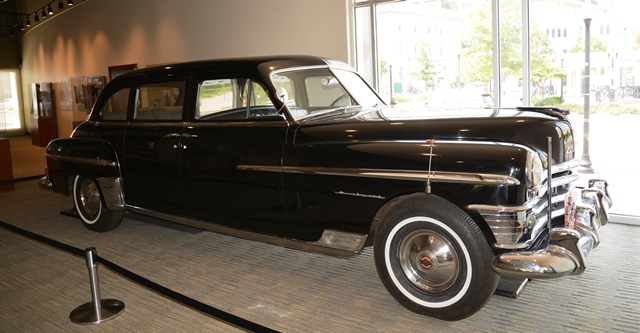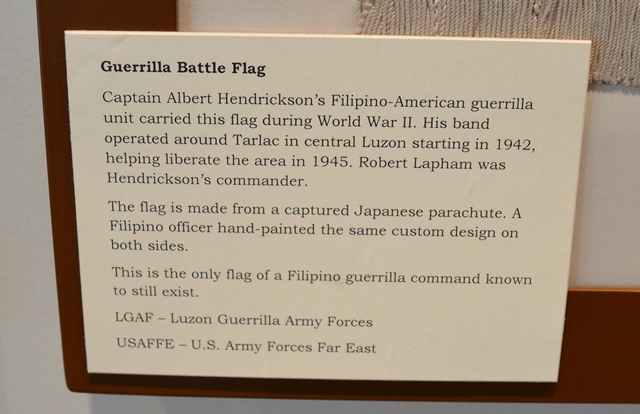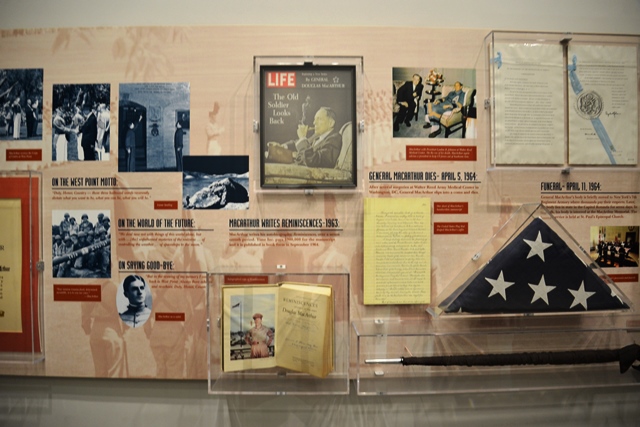The MacArthur Memorial
Duty * Honor * Country

This was a much anticipated stop, which I am so glad we were able to make; the memorial, located in Norfolk, Virginia, pays tribute to General Douglas MacArthur’s life and career.
One of the things which made this such an outstanding museum was the General and his family’s corporation and contributions to the exhibits. There are many very personal items on display as well as historically relevant material, which aids in the understanding of his contributions to the 20th Century.
I have not previously shared this with you because, of the quality, of my pictures. However, the memorial offers a virtual tour, with much better resolution, and I am also including a few links worth checking out, especially the video which highlights the general’s cap, iconic pipe, and sunglasses. I cannot believe I only took one shot of that display.
I was very excited to go to this museum, and I am afraid my enthusiasm to tour the exhibits negatively impacted my capturing the moment, to share with you. Never-the-less, how cool is it to see Admiral Nimitz’s calling card, and those four stars!

His footlocker from World War I


The General’s staff car from “late 1950’s through 1963”. It was returned to the US when he was sent home; he used the car in New York City, where he moved.


Japan’s unconditional surrender of the Philippians


Jean’s Bible






The General and his wife, Jean, are interred at the Memorial



Links:
https://macarthurmemorial.org/
https://macarthurmemorial.org/207/Virtual-Tour
https://www.youtube.com/watch?v=WZPvC8cCNZs
https://www.youtube.com/watch?v=dW8zQQ-yDBI
“Today the guns are silent. . .”

I so love when I get to “touch” history
From Wikipedia: https://en.wikipedia.org/wiki/Douglas_MacArthur
“General of the Army Douglas MacArthur (26 January 1880 – 5 April 1964) was an American five-star general and Field Marshal of the Philippine Army. He was Chief of Staff of the United States Army during the 1930s and played a prominent role in the Pacific theater during World War II. He received the Medal of Honor for his service in the Philippines campaign, which made him and his father Arthur MacArthur Jr. the first father and son to be awarded the medal. He was one of only five to rise to the rank of General of the Army in the US Army, and the only one conferred the rank of field marshal in the Philippine Army.
Raised in a military family in the American Old West, MacArthur was valedictorian at the West Texas Military Academy where he finished high school, and First Captain at the United States Military Academy at West Point, where he graduated top of the class of 1903. During the 1914 United States occupation of Veracruz, he conducted a reconnaissance mission, for which he was nominated for the Medal of Honor. In 1917, he was promoted from major to colonel and became chief of staff of the 42nd (Rainbow) Division. In the fighting on the Western Front during World War I, he rose to the rank of brigadier general, was again nominated for a Medal of Honor, and was awarded the Distinguished Service Cross twice and the Silver Star seven times.
From 1919 to 1922, MacArthur served as Superintendent of the U.S. Military Academy at West Point, where he attempted a series of reforms. His next assignment was in the Philippines, where in 1924 he was instrumental in quelling the Philippine Scout Mutiny. In 1925, he became the Army’s youngest major general. He served on the court-martial of Brigadier General Billy Mitchell and was president of the American Olympic Committee during the 1928 Summer Olympics in Amsterdam. In 1930, he became Chief of Staff of the United States Army. As such, he was involved in the expulsion of the Bonus Army protesters from Washington, D.C. in 1932, and the establishment and organization of the Civilian Conservation Corps. He retired from the US Army in 1937 to become Military Advisor to the Commonwealth Government of the Philippines.
MacArthur was recalled to active duty in 1941 as commander of United States Army Forces in the Far East. A series of disasters followed, starting with the destruction of his air forces on 8 December 1941 and the Japanese invasion of the Philippines. MacArthur’s forces were soon compelled to withdraw to Bataan, where they held out until May 1942. In March 1942, MacArthur, his family and his staff left nearby Corregidor Island in PT boats and escaped to Australia, where MacArthur became Supreme Commander, Southwest Pacific Area. Upon his arrival, MacArthur gave a speech in which he famously promised “I shall return” to the Philippines. After more than two years of fighting in the Pacific, he fulfilled that promise. For his defense of the Philippines, MacArthur was awarded the Medal of Honor. He officially accepted the surrender of Japan on 2 September 1945 aboard the USS Missouri, which was anchored in Tokyo Bay, and he oversaw the occupation of Japan from 1945 to 1951. As the effective ruler of Japan, he oversaw sweeping economic, political and social changes. He led the United Nations Command in the Korean War with initial success; however, the controversial invasion of North Korea provoked Chinese intervention, and a series of major defeats. MacArthur was contentiously removed from command by President Harry S. Truman on 11 April 1951. He later became chairman of the board of Remington Rand.”







